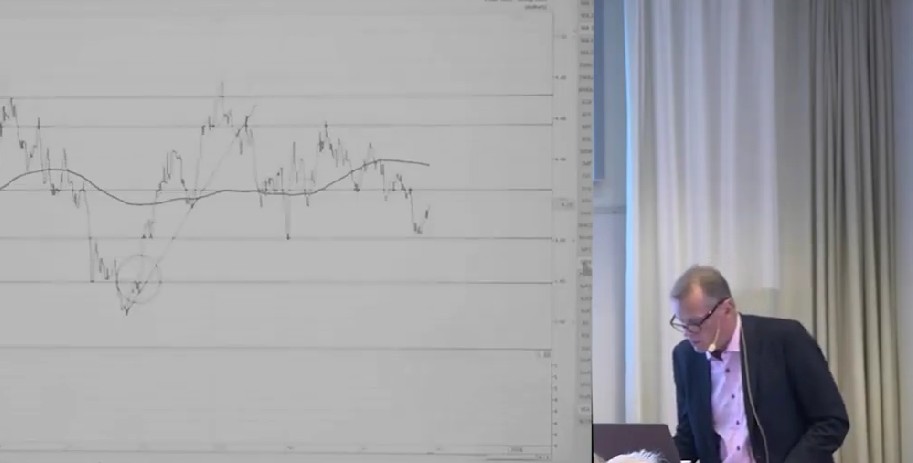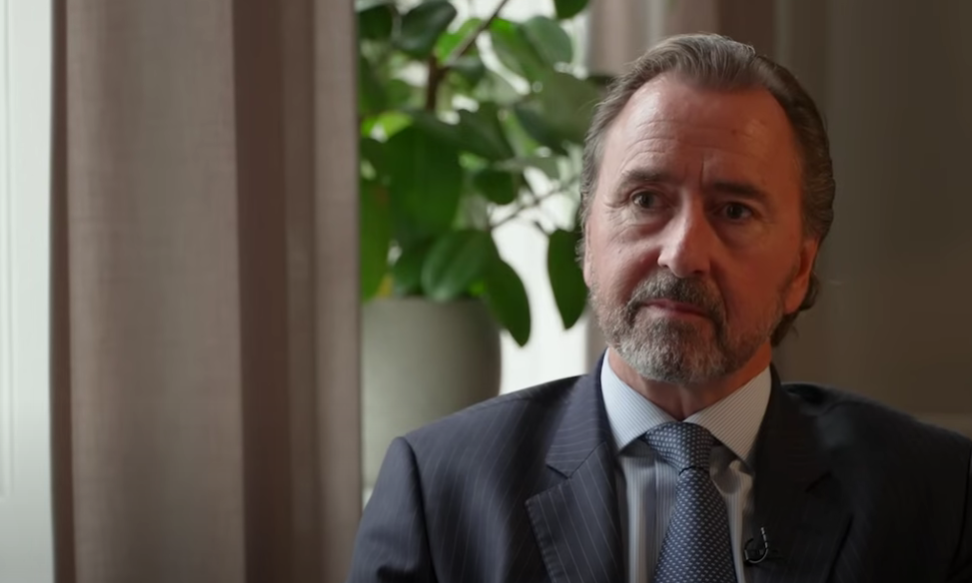Marknadsnyheter
Enhertu showed substantial clinical activity in patients with HER2-positive metastatic breast cancer and brain metastases
AstraZeneca and Daiichi Sankyo’s Enhertu achieved a 61.6% progression-free survival rate at one year in patients with active or stable brain metastases in DESTINY-Breast12. Largest prospective trial of Enhertu in this patient population.
Results from the DESTINY-Breast12 Phase IIIb/IV trial showed that Enhertu (trastuzumab deruxtecan) demonstrated substantial overall and intracranial clinical activity in a large cohort of patients with HER2-positive metastatic breast cancer who have brain metastases and received no more than two prior lines of therapy in the metastatic setting. Results will be presented today as a late-breaking presentation (abstract #LBA18) at the European Society for Medical Oncology and simultaneously published in Nature Medicine.
Enhertu is a specifically engineered HER2-directed DXd antibody drug conjugate (ADC) discovered by Daiichi Sankyo and being jointly developed and commercialised by AstraZeneca and Daiichi Sankyo.
In patients with brain metastases at baseline, the primary endpoint of progression-free survival (PFS) by independent central review showed a 12-month PFS rate of 61.6%. Additionally, patients with brain metastases showed a central nervous system (CNS) 12-month PFS rate of 58.9%. Results were consistent in patients with stable and active brain metastases. Patients with stable brain metastases had a 12-month PFS rate of 62.9% and a 12-month CNS PFS rate of 57.8%. Patients with active brain metastases had a 12-month PFS rate of 59.6% and a 12-month CNS PFS rate of 60.1%.
In patients without brain metastases at baseline, the primary endpoint of confirmed objective response rate (ORR) by independent central review showed an ORR of 62.7% with 23 complete responses (CR) and 128 partial responses (PR).
Nancy Lin, MD, Associate Chief, Division of Breast Oncology, Dana-Farber Cancer Institute, Boston, MA, US and principal investigator for the trial, said: “Up to fifty per cent of patients with HER2-positive metastatic breast cancer experience the spread of disease to the brain during the course of their illness, which significantly impacts quality of life and outcomes. These data help further characterise the clinical benefit and safety profile of Enhertu in these patients, which will help guide treatment decisions.”
Sunil Verma, Global Head, Oncology Franchise, AstraZeneca, said: “The results from DESTINY-Breast12 show substantial clinical activity for patients whose disease has spread to the brain. These data as well as the results in patients without brain metastases further build confidence in the clinical profile of Enhertu for the second-line treatment of HER2-positive metastatic breast cancer.”
Mark Rutstein, Global Head, Oncology Development, Daiichi Sankyo, said: “Treating brain metastases in patients with breast cancer is challenging as there are few effective treatment options. Building on previous studies, these results show Enhertu can provide strong overall and intracranial clinical activity and support its potential role in treating patients with active or stable brain metastases.”
Summary of results: DESTINY-Breast12 primary analysis
| Efficacy measure | Baseline brain metastases (cohort 2) | No baseline brain metastases (cohort 1) | ||
| Overall population(n=263) | Stable brain metastasesi(n=157) | Active brain metastasesii(n=106) | Overall population(n=241)iii | |
| 12-month PFS Rate (%) (95% CI)iv | 61.6(54.9-67.6) | 62.9(54.0-70.5) | 59.6(49.0-68.7) | — |
| 12-month CNS PFS Rate (%) (95% CI)v | 58.9(51.9-65.3) | 57.8 (48.2-66.1) | 60.1(49.2-69.4) | — |
| 12-month OS Rate (%) (95% CI) | 90.3(85.9-93.4) | — | — | 90.6(86.0-93.8) |
| Confirmed ORR (%)vi, vii (95% CI) | 51.7(45.7-57.8) | 49.7(41.9-57.5) | 54.7(45.2-64.2) | 62.7(56.5-68.8) |
| CR % (n) | 4.2 (11) | — | — | 9.5 (23) |
| PR % (n) | 47.5 (125) | — | — | 53.1(128)viii |
| Confirmed CNS ORR (%)(95% CI)ix | 71.7(64.2-79.3)n=138 | 79.2(70.2-88.3)n=77 | 62.3(50.1-74.5)n=61 | — |
PFS, progression-free survival; CI, confidence interval; CNS, central nervous system; OS, overall survival; ORR, objective response rate; CR, complete response; PR, partial response
i Stable brain metastases (previously treated)
ii Active brain metastases (untreated or previously treated / progressing [not requiring immediate local therapy])
iii Includes 26 patients with no measurable disease at baseline
iv Primary endpoint for baseline brain metastases (cohort 2) was median PFS with 42.2% data maturity at time of data cutoff (8 February 2024); post-hoc analysis showed median PFS of 17.3 months (95% CI 13.7-22.1)
v Patients who had systemic progression, but no CNS progression, were censored at the time of the progression assessment; the analysis did not account for systemic progression as a competing event
vi Primary endpoint for no baseline brain metastases cohort (cohort 1)
vii ORR is (CR + PR)
viii One patient with no measurable disease at baseline was assigned PR by independent central review
ix Analysis of CNS ORR was in patients with measurable CNS disease at baseline
A post-hoc analysis in patients with active brain metastases showed the CNS ORR was 82.6% (n=19/23) for patients who had not received prior local CNS therapy and 50.0% (n=19/38) in patients who had progressed following prior local CNS therapy.
The safety profile of Enhertu in DESTINY-Breast12 was consistent with previous breast cancer clinical trials with no new safety concerns identified. The safety profile of Enhertu in the trial was also generally consistent between patients with brain metastases and patients without brain metastases.
Interstitial lung disease (ILD) or pneumonitis occurred in 12.9% of patients in the cohort without brain metastases and 16.0% in the cohort of patients with brain metastases as determined by the investigator. The majority of ILD events were low grade (Grade 1 or 2). In patients without brain metastases, there were 22 Grade 1 ILD events, six Grade 2 events, zero Grade 3 and 4 events, and three (1.2%) Grade 5 events. In patients with brain metastases, there were 26 Grade 1 ILD events, eight Grade 2 events, one Grade 3 event, one Grade 4 event and six (2.3%) Grade 5 events. Five ILD or pneumonitis events in the brain metastases cohort were reported by the investigator as co-occurring with opportunistic infection (one Grade 4 and four Grade 5).
Enhertu is approved in more than 65 countries for the treatment of unresectable or metastatic HER2-positive breast cancer who have received a prior anti-HER2-based regimen.
Notes
Breast cancer, HER2 expression and brain metastases
Breast cancer is the second most common cancer and one of the leading causes of cancer-related deaths worldwide.1 More than two million breast cancer cases were diagnosed in 2022 with more than 665,000 deaths globally.1 While survival rates are high for those diagnosed with early breast cancer, only about 30% of patients diagnosed with or who progress to metastatic disease are expected to live five years following diagnosis.2
HER2 is a tyrosine kinase receptor growth-promoting protein expressed on the surface of many types of tumors, including breast cancer.3 HER2 protein overexpression may occur as a result of HER2 gene amplification and is often associated with aggressive disease and poor prognosis in breast cancer.4 Approximately one in five cases of breast cancer are considered HER2-positive.5
Brain metastases occur when cancer cells spread from their original location to the brain. An estimated 10% to 15% of patients diagnosed with metastatic breast cancer will develop brain metastases.6 The risk is higher for those with HER2-positive or triple-negative metastatic breast cancer, with brain metastases occurring in 30% to 50% of these patients.7
The median overall survival for patients with breast cancer who have developed brain metastases is eight months; however, this varies based on subtype and the availability of effective treatments.8 Current guidelines do not recommend screening patients with breast cancer for brain metastases. As a result, when brain metastases are eventually diagnosed, patients may already present with advanced disease.7
DESTINY-Breast12
DESTINY-Breast12 is an open-label, multicentre, Phase IIIb/IV 2-cohort, non-comparative clinical trial designed to evaluate the efficacy and safety of Enhertu (5.4 mg/kg) in patients with previously treated advanced/metastatic HER2-positive breast cancer. The study includes patients without brain metastases (cohort 1) or with brain metastases (cohort 2) who have experienced disease progression following prior anti-HER2-based regimens and have received no more than two lines of therapy in the metastatic setting. Patients were enrolled into one of two cohorts according to the presence or absence of brain metastases at baseline.
The primary endpoint of cohort 1 was ORR as assessed by independent review (non-brain metastases cohort) and the primary endpoint of cohort 2 (brain metastases cohort) was PFS. Additional endpoints included CNS PFS, CNS ORR, ORR in the brain metastases cohort and safety.
DESTINY-Breast12 enrolled 504 patients across multiple sites in Asia, Europe, North America and Oceania. For more information about the trial, visit ClinicalTrials.gov.
Enhertu
Enhertu is a HER2-directed ADC. Designed using Daiichi Sankyo’s proprietary DXd ADC Technology, Enhertu is the lead ADC in the oncology portfolio of Daiichi Sankyo and the most advanced programme in AstraZeneca’s ADC scientific platform. Enhertu consists of a HER2 monoclonal antibody attached to a number of topoisomerase I inhibitor payloads (an exatecan derivative, DXd) via tetrapeptide-based cleavable linkers.
Enhertu (5.4mg/kg) is approved in more than 65 countries worldwide for the treatment of adult patients with unresectable or metastatic HER2-positive (immunohistochemistry [IHC] 3+ or in-situ hybridisation [ISH]+) breast cancer who have received a prior anti-HER2-based regimen, either in the metastatic setting or in the neoadjuvant or adjuvant setting, and have developed disease recurrence during or within six months of completing therapy based on the results from the DESTINY-Breast03 trial.
Enhertu (5.4mg/kg) is approved in more than 65 countries worldwide for the treatment of adult patients with unresectable or metastatic HER2-low (IHC 1+ or IHC 2+/ ISH-) breast cancer who have received a prior systemic therapy in the metastatic setting or developed disease recurrence during or within six months of completing adjuvant chemotherapy based on the results from the DESTINY-Breast04 trial.
Enhertu (5.4mg/kg) is approved in more than 35 countries worldwide for the treatment of adult patients with unresectable or metastatic NSCLC whose tumours have activating HER2 (ERBB2) mutations, as detected by a locally or regionally approved test, and who have received a prior systemic therapy based on the results from the DESTINY-Lung02 and/or DESTINY-Lung05 trials. Continued approval in the US for this indication may be contingent upon verification and description of clinical benefit in a confirmatory trial.
Enhertu (6.4mg/kg) is approved in more than 45 countries worldwide for the treatment of adult patients with locally advanced or metastatic HER2-positive (IHC 3+ or 2+/ISH+) gastric or gastroesophageal junction (GEJ) adenocarcinoma who have received a prior trastuzumab-based regimen based on the results from the DESTINY-Gastric01, DESTINY-Gastric02 and/or DESTINY-Gastric06 trials. Full approval in China for this indication will depend on whether a randomised controlled confirmatory clinical trial can demonstrate clinical benefit in this population.
Enhertu (5.4mg/kg) is approved in the US for the treatment of adult patients with unresectable or metastatic HER2-positive (IHC 3+) solid tumours who have received prior systemic treatment and have no satisfactory alternative treatment options based on efficacy results from the DESTINY-PanTumor02, DESTINY-Lung01 and DESTINY-CRC02 trials. Continued approval for this indication in the US may be contingent upon verification and description of clinical benefit in a confirmatory trial.
Enhertu development programme
A comprehensive global clinical development programme is underway evaluating the efficacy and safety of Enhertu monotherapy across multiple HER2-targetable cancers. Trials in combination with other anti-cancer treatments, such as immunotherapy, also are underway.
Daiichi Sankyo collaboration
AstraZeneca and Daiichi Sankyo entered into a global collaboration to jointly develop and commercialise Enhertu in March 2019 and datopotamab deruxtecan in July 2020, except in Japan where Daiichi Sankyo maintains exclusive rights for each ADC. Daiichi Sankyo is responsible for the manufacturing and supply of Enhertu and datopotamab deruxtecan.
AstraZeneca in breast cancer
Driven by a growing understanding of breast cancer biology, AstraZeneca is starting to challenge, and redefine, the current clinical paradigm for how breast cancer is classified and treated to deliver even more effective treatments to patients in need – with the bold ambition to one day eliminate breast cancer as a cause of death.
AstraZeneca has a comprehensive portfolio of approved and promising compounds in development that leverage different mechanisms of action to address the biologically diverse breast cancer tumour environment.
With Enhertu (trastuzumab deruxtecan), a HER2-directed antibody drug conjugate (ADC), AstraZeneca and Daiichi Sankyo are aiming to improve outcomes in previously treated HER2-positive and HER2-low metastatic breast cancer and are exploring its potential in earlier lines of treatment and in new breast cancer settings.
In HR-positive breast cancer, AstraZeneca continues to improve outcomes with foundational medicines Faslodex and Zoladex (goserelin) and aims to reshape the HR-positive space with first-in-class AKT inhibitor, Truqap, and next-generation SERD and potential new medicine camizestrant. AstraZeneca is also collaborating with Daiichi Sankyo to explore the potential of TROP2-directed ADC, datopotamab deruxtecan, in this setting.
PARP inhibitor Lynparza (olaparib) is a targeted treatment option that has been studied in early and metastatic breast cancer patients with an inherited BRCA mutation. AstraZeneca with MSD (Merck & Co., Inc. in the US and Canada) continue to research Lynparza in these settings and to explore its potential in earlier disease.
To bring much-needed treatment options to patients with triple-negative breast cancer, an aggressive form of breast cancer, AstraZeneca is evaluating the potential of datopotamab deruxtecan alone and in combination with immunotherapy Imfinzi (durvalumab), Truqap in combination with chemotherapy, and Imfinzi in combination with other oncology medicines, including Lynparza and Enhertu.
AstraZeneca in oncology
AstraZeneca is leading a revolution in oncology with the ambition to provide cures for cancer in every form, following the science to understand cancer and all its complexities to discover, develop and deliver life-changing medicines to patients.
The Company’s focus is on some of the most challenging cancers. It is through persistent innovation that AstraZeneca has built one of the most diverse portfolios and pipelines in the industry, with the potential to catalyse changes in the practice of medicine and transform the patient experience.
AstraZeneca has the vision to redefine cancer care and, one day, eliminate cancer as a cause of death.
AstraZeneca
AstraZeneca (LSE/STO/Nasdaq: AZN) is a global, science-led biopharmaceutical company that focuses on the discovery, development, and commercialisation of prescription medicines in Oncology, Rare Diseases, and BioPharmaceuticals, including Cardiovascular, Renal & Metabolism, and Respiratory & Immunology. Based in Cambridge, UK, AstraZeneca’s innovative medicines are sold in more than 125 countries and used by millions of patients worldwide. Please visit astrazeneca.com and follow the Company on social media @AstraZeneca.
Contacts
For details on how to contact the Investor Relations Team, please click here. For Media contacts, click here.
References
- Bray F, et al. Global cancer statistics 2022: GLOBOCAN estimates of incidence and mortality worldwide for 36 cancers in 185 countries. CA Cancer J Clin. 2024 Apr 4. doi: 10.3322/caac.21834.
- National Cancer Institute. Surveillance, Epidemiology and End Results Program. Available at: https://seer.cancer.gov/statfacts/html/breast-subtypes.html. Accessed September 2024.
- Iqbal N, et al. Human Epidermal Growth Factor Receptor 2 (HER2) in Cancers: Overexpression and Therapeutic Implications. Mol Biol Int. 2014;852748.
- Pillai R, et al. HER2 mutations in lung adenocarcinomas: A report from the Lung Cancer Mutation Consortium. Cancer. 2017 Nov 1;123(21):4099-4105.
- Ahn S, et al. HER2 status in breast cancer: changes in guidelines and complicating factors for interpretation. J Pathol Transl Med. 2020;54(1):34-44.
- Simsek M, et al. Breast Cancer Patients with Brain Metastases: A Cross-Sectional Study. Breast J. 2022; 19;2022:5763810.
- Kuksis M, et al. The incidence of brain metastases among patients with metastatic breast cancer: a systematic review and meta-analysis. Neuro Oncol. 2021 Jun 1;23(6):894-904.
- Bailleux C, et al. Treatment strategies for breast cancer brain metastases. Br J Cancer. 2021 Jan;124(1):142-155
Marknadsnyheter
Teknisk analys på flera marknader med Anders Haglund

Anders Haglund går igenom den tekniska analysen på flera marknader samt även några olika enskilda aktier.
Marknadsnyheter
JRS chefsstrateg Torbjörn Söderberg om börsen framåt

JRS chefsstrateg Torbjörn Söderberg pratar med Jesper Norberg på EFN om börsens väg framåt. Man tar upp värderingar och makro, samt hur han själv väljer att agera.
Marknadsnyheter
Kreditkort skapar problem för USAs konsumenter – CNBC granskar

CNBC tittar närmare på hur kreditkort skapar problem för konsumenterna i USA som får betala räntor på upp till 36 %, och ovanpå det kommer nya avgifter. När det skapar så här stora problem blir det ett problem för ekonomin som helhet, det är inte bara ett individuellt problem.
CNBC granskar kreditkort och problemen de skapar
Vi skrev nyligen om rekordhög belåning hos investerare i USA. Det är samma sak här, när det är så många individer som är så hårt belånade blir det ett problem för hela aktiemarknaden.
-
Analys från DailyFX10 år ago
EUR/USD Flirts with Monthly Close Under 30 Year Trendline
-
Marknadsnyheter5 år ago
BrainCool AB (publ): erhåller bidrag (grant) om 0,9 MSEK från Vinnova för bolagets projekt inom behandling av covid-19 patienter med hög feber
-

 Marknadsnyheter3 år ago
Marknadsnyheter3 år agoUpptäck de bästa verktygen för att analysera Bitcoin!
-
Analys från DailyFX12 år ago
Japanese Yen Breakout or Fakeout? ZAR/JPY May Provide the Answer
-

 Marknadsnyheter2 år ago
Marknadsnyheter2 år agoDärför föredrar svenska spelare att spela via mobiltelefonen
-
Analys från DailyFX12 år ago
Price & Time: Key Levels to Watch in the Aftermath of NFP
-
Analys från DailyFX8 år ago
Gold Prices Falter at Resistance: Is the Bullish Run Finished?
-

 Nyheter7 år ago
Nyheter7 år agoTeknisk analys med Martin Hallström och Nils Brobacke

